SUMMER IN MY GARDEN - Episode Four - PEPPERS AND MORE
Of all the plants I cultivated this summer in my garden, the peppers were the least visited by insects and spiders. But I did catch some species posing on the leaves. Furthermore, the fruits & flowers were pretty photogenic in their own right, so today, I decided to dedicate half of the title and a good chunk of the episode to those peppers.
You'll see peppers, tomatoes, and some fascinating insects. Have a good viewing.
This is Hermetia illucens, a fly from the Stratiomyidae family, commonly known as the black soldier fly. Adults like the one shown in this and the following photograph feed on nectar while the larvae eat various kinds of decomposing organic matter. Black soldier fly larvae are great at breaking down organic substrates and returning nutrients to the soil. I used the flash of my camera in this photograph. It was easier to get a sharp image with plenty of details that way, but ...
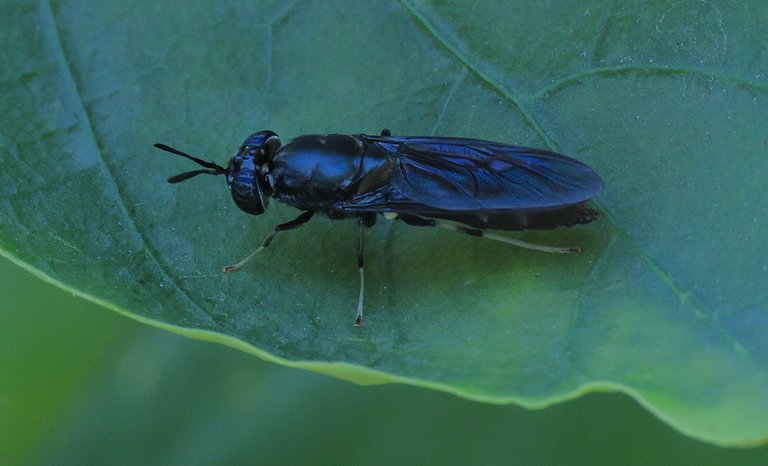
... but the dark shine of the black soldier fly can be properly admired only in the subdued ambient light. In the shade or on a cloudy day.
Here you can see a spider from the Thomisidae family. A crab spider, in other words. The name of the species is Pistius truncatus. Its brown color and the texture of its exoskeleton surely make the spider well-camouflaged on the bark of the trees but here on the foliage provided by the pepper plant, Pistius truncatus is very well pronounced against the green backdrop. That's great for photography but it can present some problems when it comes to survival.
In this photograph, partially due to the diagonal composition of the elements inside the frame, the pose of the spider looks kind of dramatic. Well, to me, at least. This species is common throughout Europe but I saw it only a couple of times, and only in my garden. I mean, when it comes to seeing the spider in person. Live. In nature, and stuff like that. I can see Pistius truncates whenever I want on the Internet.
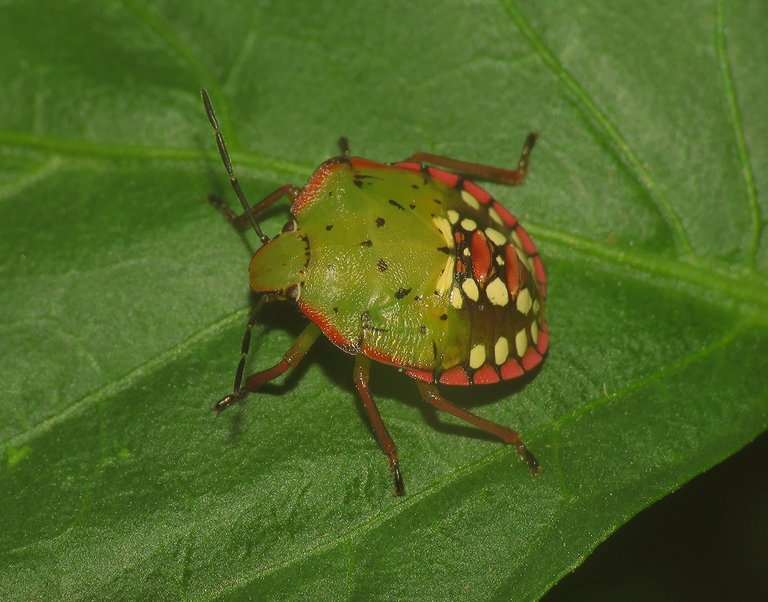
Nezara viridula is a shield bug species introduced in the first episode of this series.

This 5th instar nymph was posing on the pepper leaf. The green sphere, only partially visible above the insect, is an unripe tomato. Tomatoes and peppers were growing very close to each other. The following scene ...
... was photographed on a nearby tomato. You can see a 4th instar nymph and a wasp.
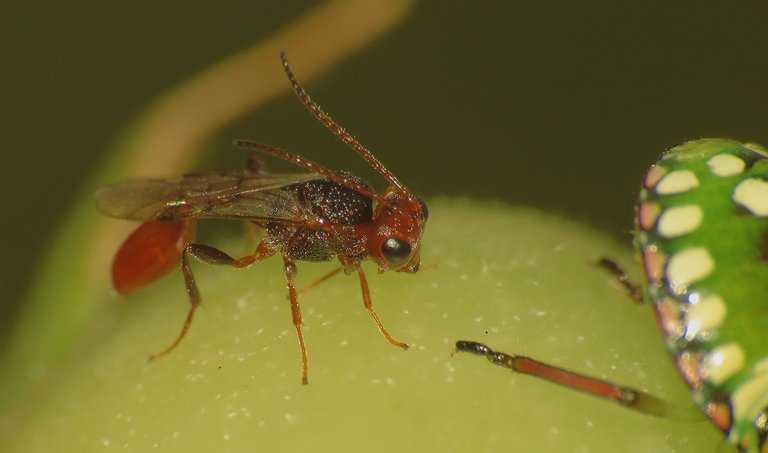
In this shot, the focus is on the wasp. The name of the species is Aridelus rufotestaceus. The family is Braconidae.
The Aridelus rufotestaceus presented in today's post is a female ready to lay eggs.
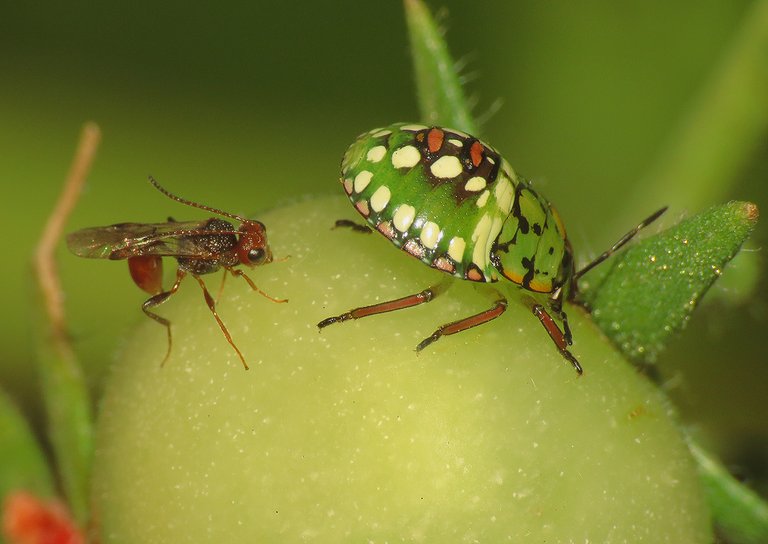
The wasp was following the shield bug ...
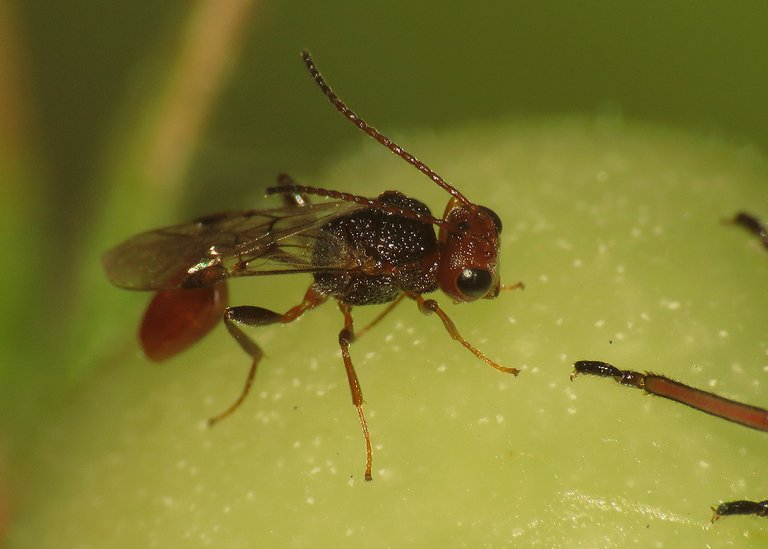
... and I was following both insects through the lens of my camera. I found a few things about the Aridelus rufotestaceus, including its scientific name, only today, on the Internet. At the time, I had no idea what to expect of this species. But I had a strong feeling that something very interesting could happen at any moment so I spent almost an hour standing there in the garden, observing the scene. It was very exciting and extremely tedious at the same time. It wasn't easy but it paid off. With interest, I'd say. At one point ...
... the wasp extended the ovipositor at the end of its abdomen to sting the shield bug and inject the eggs into the nymph's body, and I caught that quick action with my camera.
The shield bug didn't seem bothered by what just happened. Nezara viridula is the favorite host for the incubation of Aridelus rufotestaceus larvae. When the larvae reach the time to turn into adults, they exit the shield bug's body to build a cocoon which will undergo metamorphosis. The damaged host soon dies.
When this photograph was taken, the shield bug was walking away unaware of the inevitably grim future. A few minutes later, the wasp flew away.
There is nothing spectacular about the pepper plants in my garden but everything is quite beautiful. Here you can see one of their beautiful flowers. In the following photograph ...
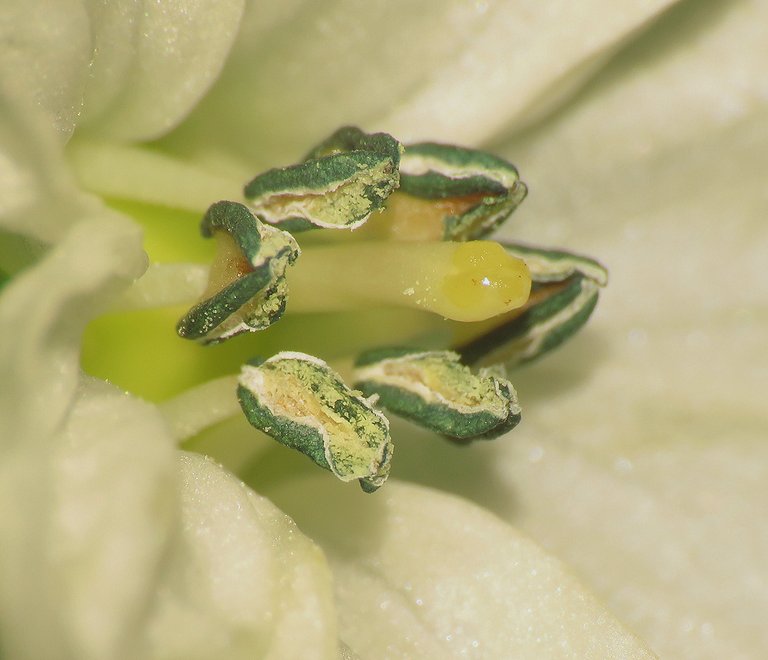
... I came closer with the macro lens, to show you all the details of the pistil and anthers in the center of the flower.
The petals of one of the two flowers shown in this photograph are shriveled and ready to fall. That flower will soon be a fruit.

Here you can take a look at the young fruit ....
... that will grow considerably bigger.
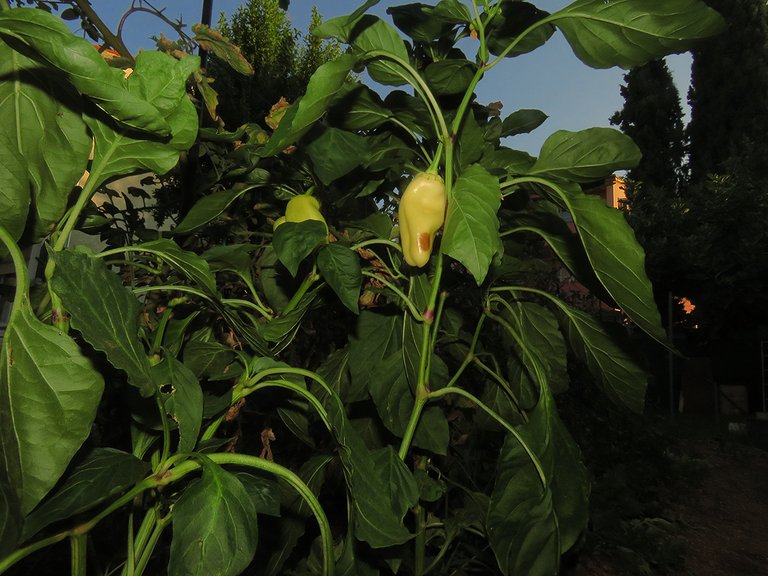
When it comes to their color, some ripe peppers in my garden are greenish-yellow ...
... others are red.
One of the two fruits shown in this shot displays a stylish combination of red and yellow.

This beautiful ladybeetle, photographed on the leaf of the same plant, reminds me of red peppers.
The name of the species is Harmonia axyridis. The family is Coccinellidae, of course. Harmonia axyridis is native to the large area that includes all climate zones of East Asia but now, introduced as a pest control, is present in many places throughout the planet. It feeds primarily on aphids. The color is very variable in this species. The shape, size, and number of the dots also vary. The dots of the ladybeetle shown in this and the previous shot look partially washed out. Some are clearly others just barely visible on the vivid red background.

Here you can see a group of tomatoes in various stages of ripening.
On the 1st of September, I saw a couple of small butterflies flying between the rows of tomato plants. Here you can see one of them resting on the dry leaf.
In one of these two shots, the butterfly is showing the upper surfaces of its wings.
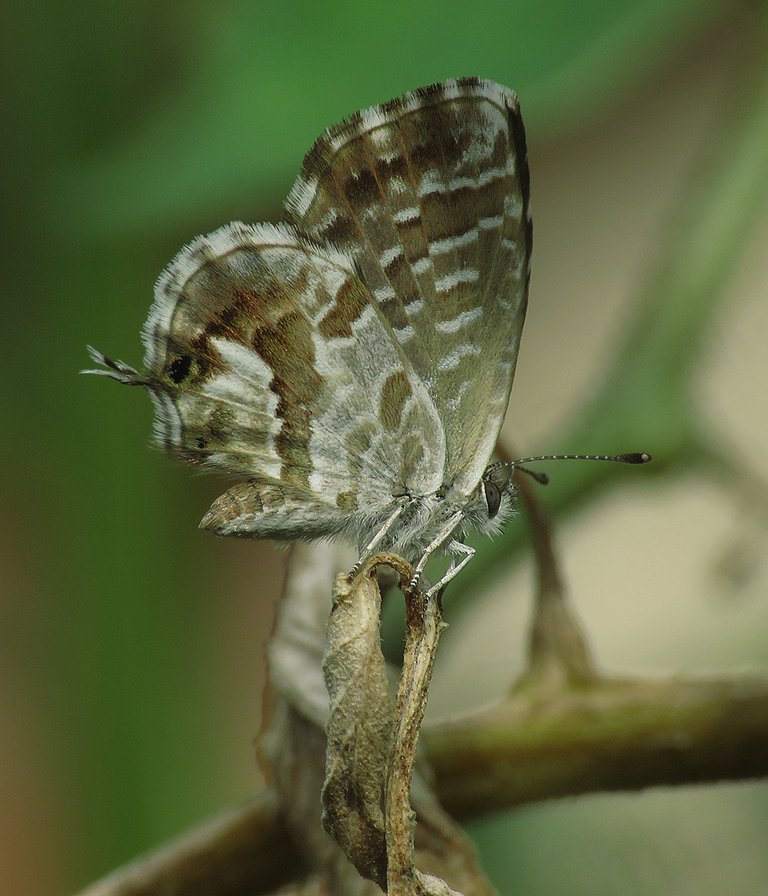
The name of the species is Cacyreus marshalli, it belongs to the Lycaenidae family.
Cacyreus marshalli, commonly known as geranium bronze is native to South Africa. It was accidentally brought to Europe in 1978 and soon found its place in various wild and urban habitats. In the southern, Mediterranean areas which include my garden, the species started being recorded two decades later, in the late 90s.
I saw this species for the first time a decade or so ago. I keep encountering these butterflies regurarely, every summer but I never noticed a Cacyreus marshalli anywhere outside my garden.
This fly from the Agromyzidae family, can't tell you what species exactly this is, was resting on the leaf of the Chenopodium album plant that was growing among the tomatoes.
Chenopodium album is an edible self-seeding weed whose soft young leaves can be eaten like spinach. In this photograph, a Nezara viridula nymph is posing on the leaf of that plant. In the following photograph ...
... you can see the well-camouflaged adult of the same species.
This Nezara viridula was photographed on the much larger leaf of the pepper.
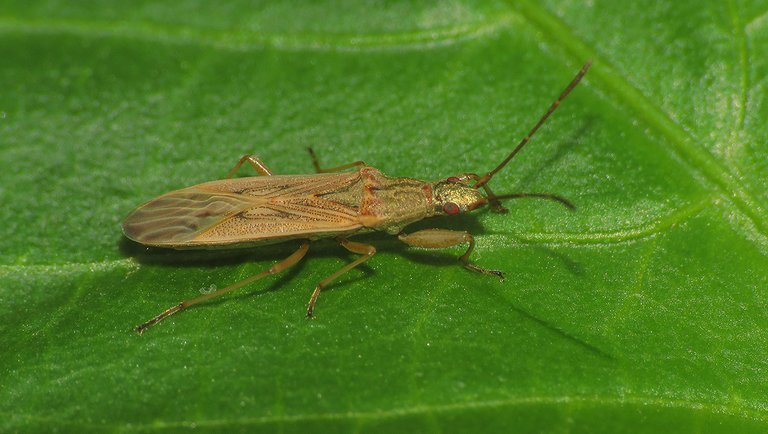
This bug, found on one of the leaves of the same kind, belongs to the Nabidae family.
If I had to guess, I would say that the name of the species is Nabis ferus. It looks a bit like that. I'm not sure in this case, and I don't remember seeing this insect before.
In this wide shot, you can take a look at the corner of the garden in which red peppers were growing.
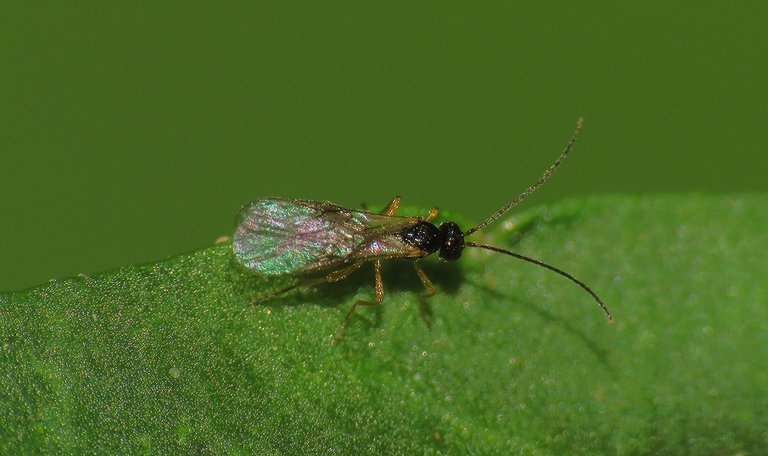
Here you can see another insect photographed on the leaves of those plants. It's a minuscule parasitoid wasp from the Braconidae family. With many related, very similar-looking species around, can't tell you which one exactly is this.
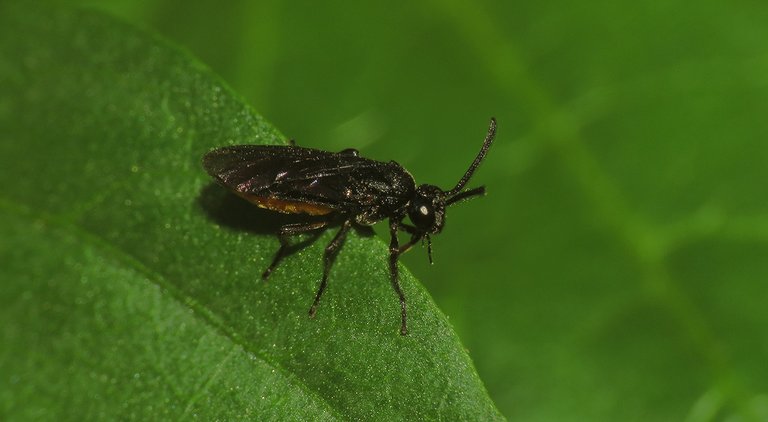
This sawfly is also posing on the pepper leaf. The name of the species is Arge pagana. It belongs to the Argidae family. I used the flash in this photograph. In the following one ...
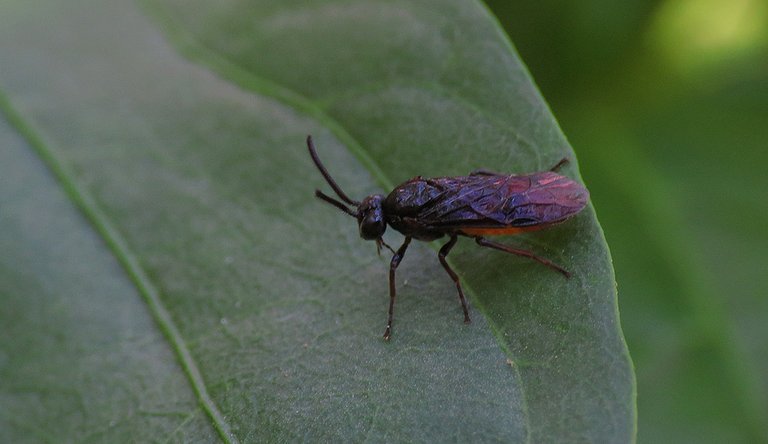
... you can take a look at the same insect photographed in the ambient light.
You can see a cluster of cherry tomatoes in the foreground of this shot.
When I pick these small tomatoes, green little stars remain in their place.

That's the cherry tomato magic.

This tiny spider from the Theridiidae family was photographed on the leaf of the tomato.
The name of the species is Anelosimus pulchellus.
This is a 3rd instar nymph of the Halyomorpha halys shield bug.
I came closer to the bug in this shot.
This photograph was taken without a flash.
Here you can see a group of 2nd instar nymphs.
This is an adult bug of the same species. In the following photograph ...

... an adult Halyomorpha halys, commonly known as the brown marmorated stink bug is posing on the red surface of the ripe tomato.
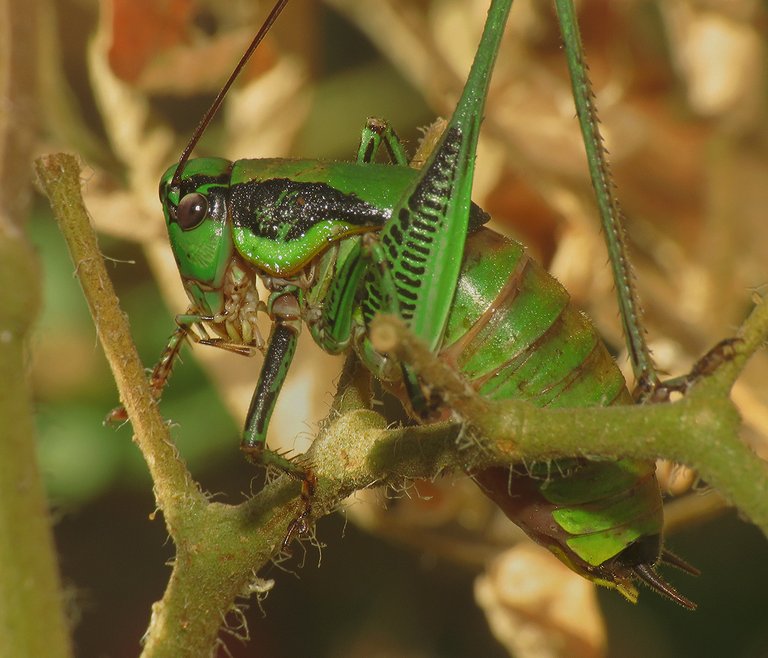
Eupholidoptera schmidti is a pretty big bushcricket. Here you can see one posing on the tomato plant.
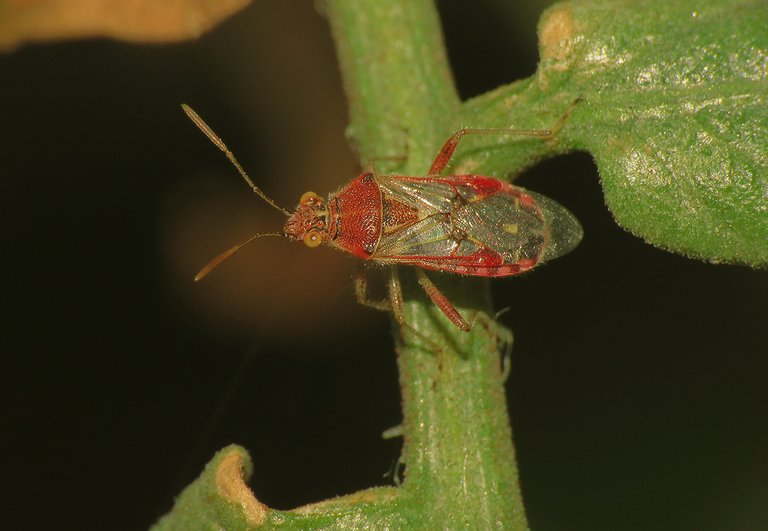
This bug belongs to the Rhopalidae family.
Its scientific name is Liorhyssus hyalinus.
The following links will take you to the sites with more information about the protagonists of this post. I found some stuff about them there.
https://en.wikipedia.org/wiki/Hermetia_illucens
https://en.wikipedia.org/wiki/Pistius_truncatus
https://en.wikipedia.org/wiki/Nezara_viridula
https://species.wikimedia.org/wiki/Aridelus_rufotestaceus
https://en.wikipedia.org/wiki/Harmonia_axyridis
https://en.wikipedia.org/wiki/Geranium_bronze
https://en.wikipedia.org/wiki/Agromyzidae
https://en.wikipedia.org/wiki/Nabis_ferus
https://en.wikipedia.org/wiki/Arge_pagana
https://www.inaturalist.org/taxa/249289-Anelosimus
https://en.wikipedia.org/wiki/Liorhyssus_hyalinus
I have three more links of a different kind for you today.
https://ecency.com/hive-140635/@borjan/summer-in-my-garden-episode-eb464586eb8b4
https://ecency.com/hive-140635/@borjan/summer-in-my-garden-episode
https://ecency.com/hive-140635/@borjan/summer-in-my-garden-episode-one-a-colorful-introduction-with-lady-beetles-and-tomatoes
They will take you to the previous episodes if you wish to go there.
AS ALWAYS HERE ON HIVE, THE PHOTOGRAPHS ARE MY WORK.
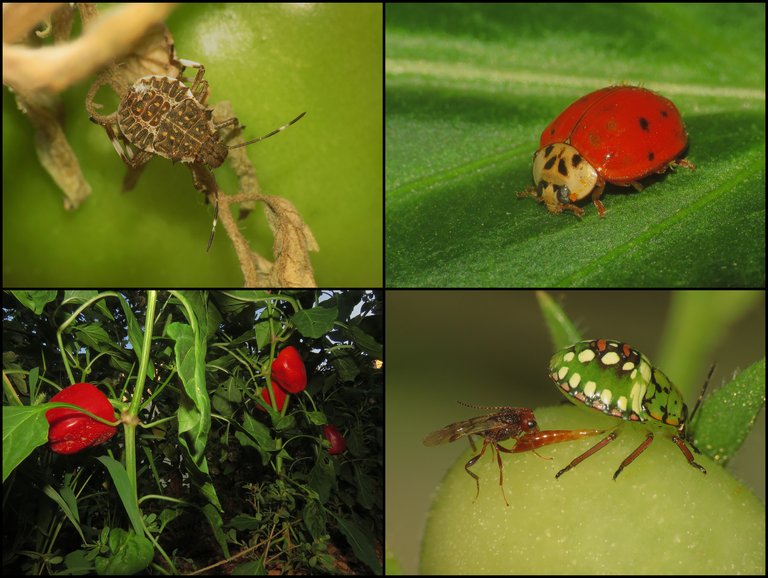




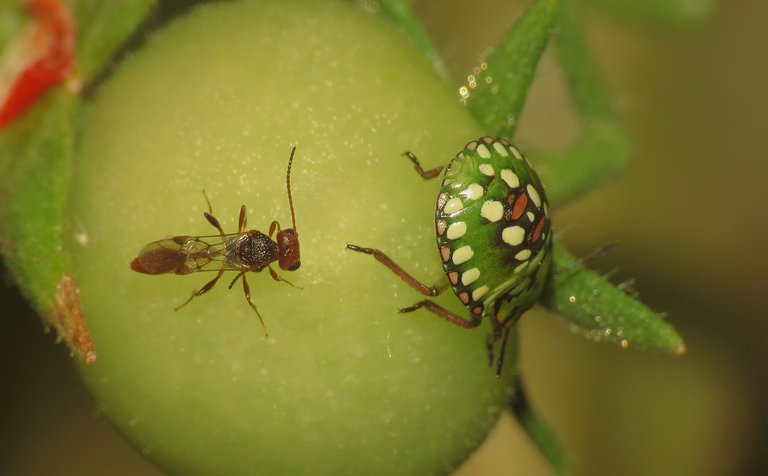
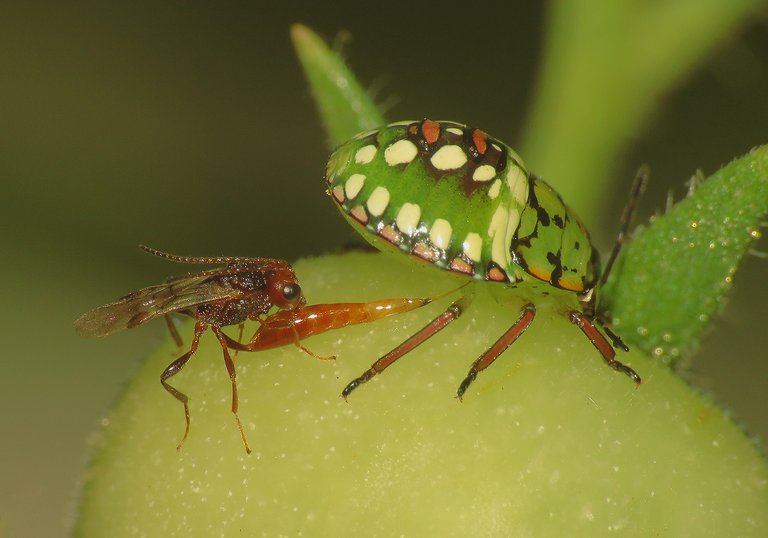

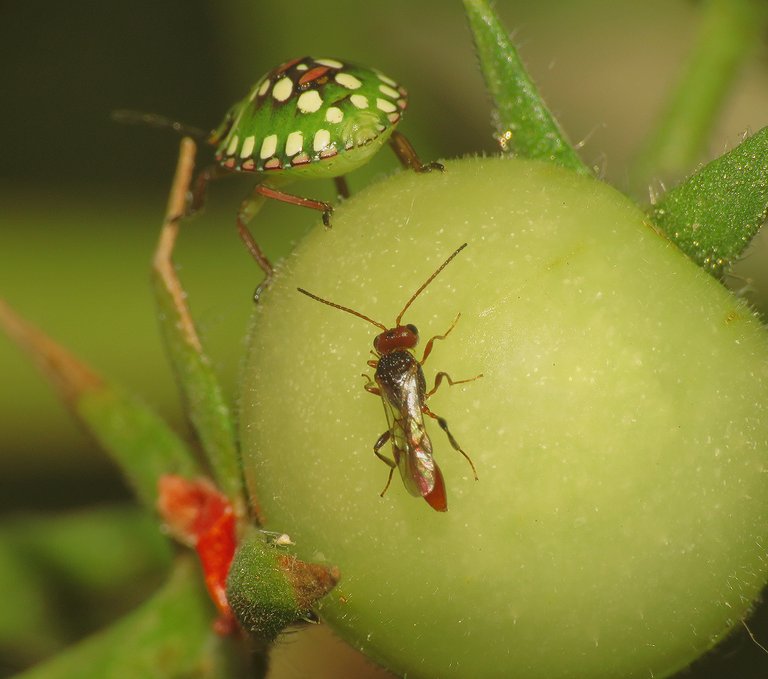
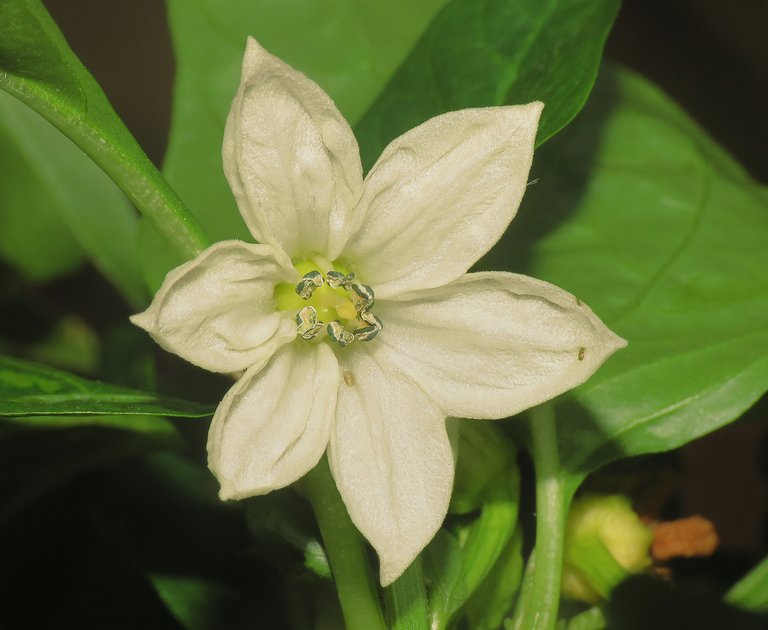





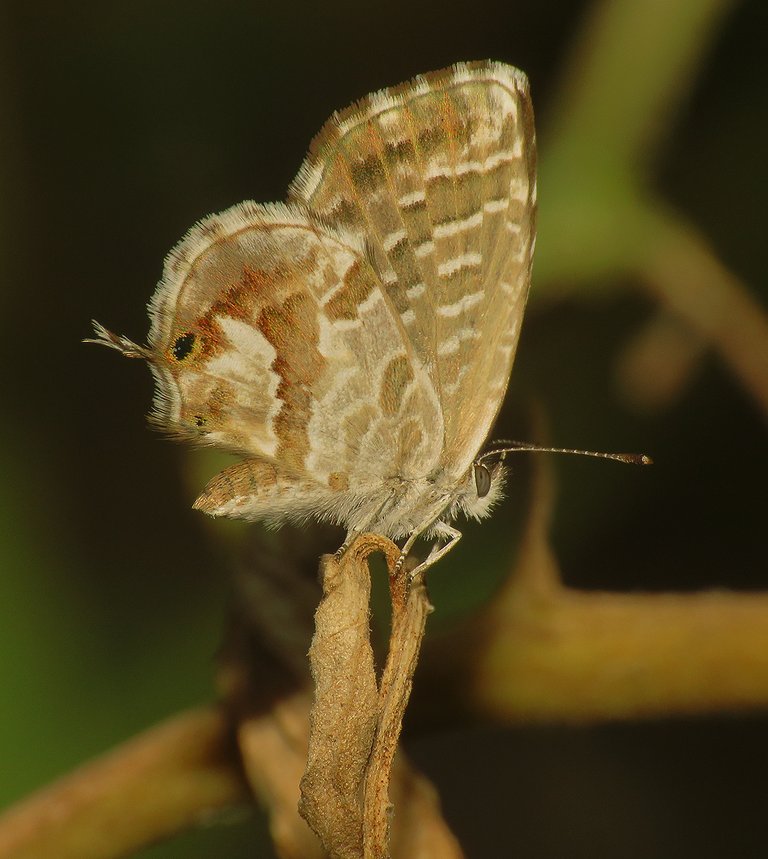

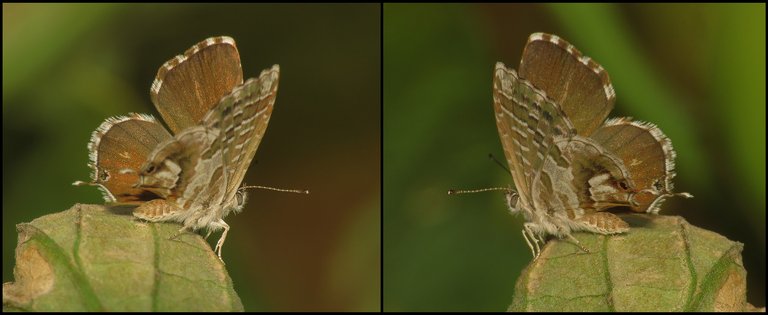
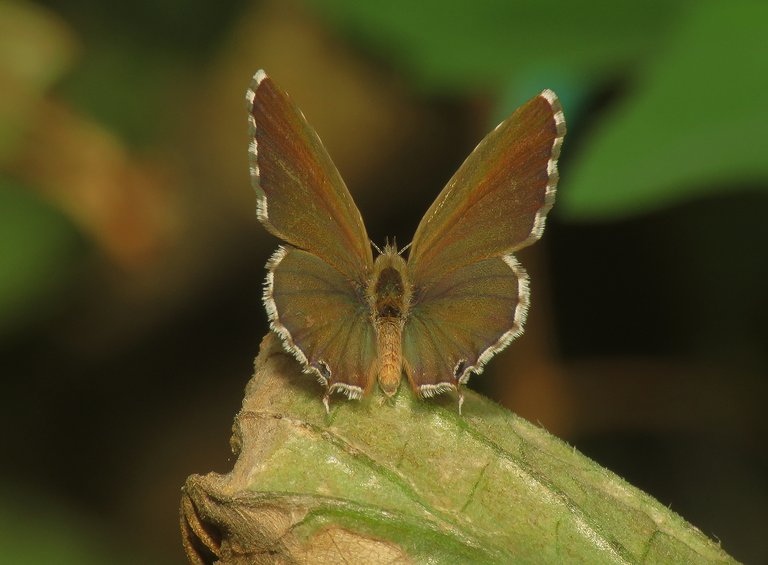


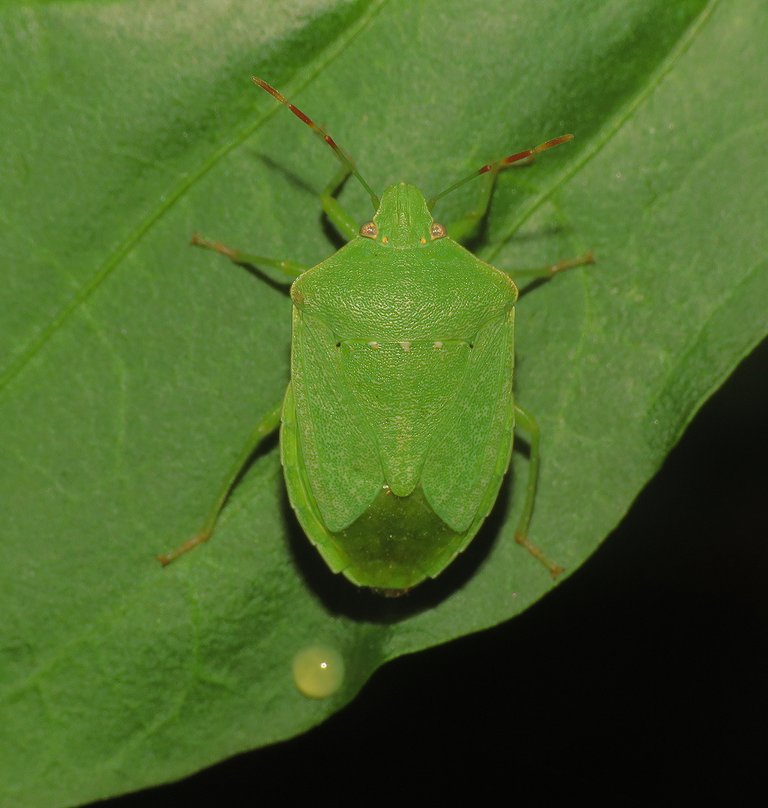
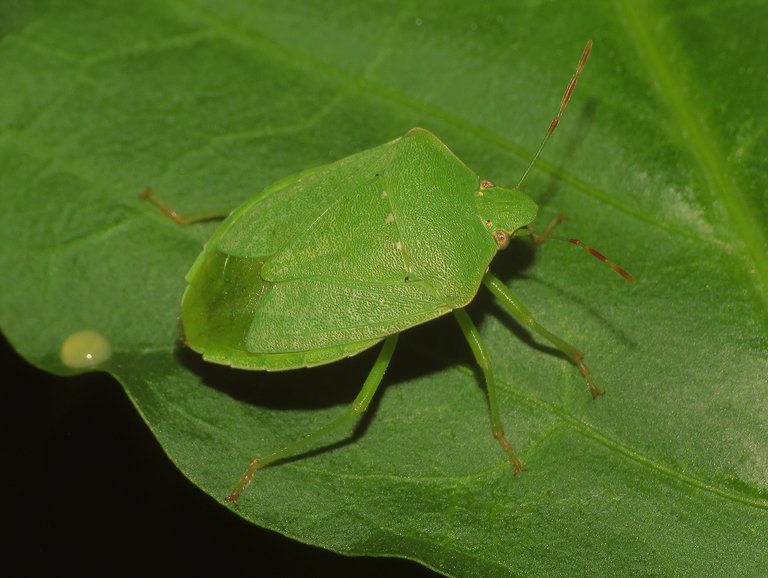


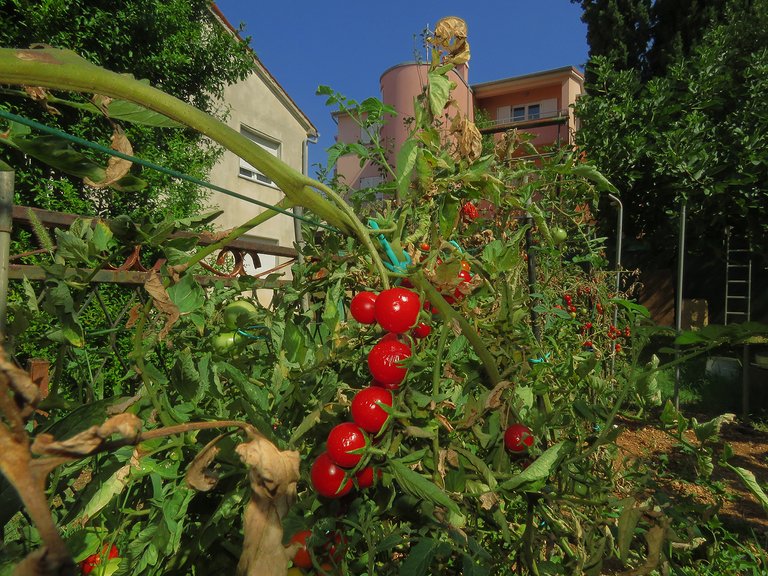
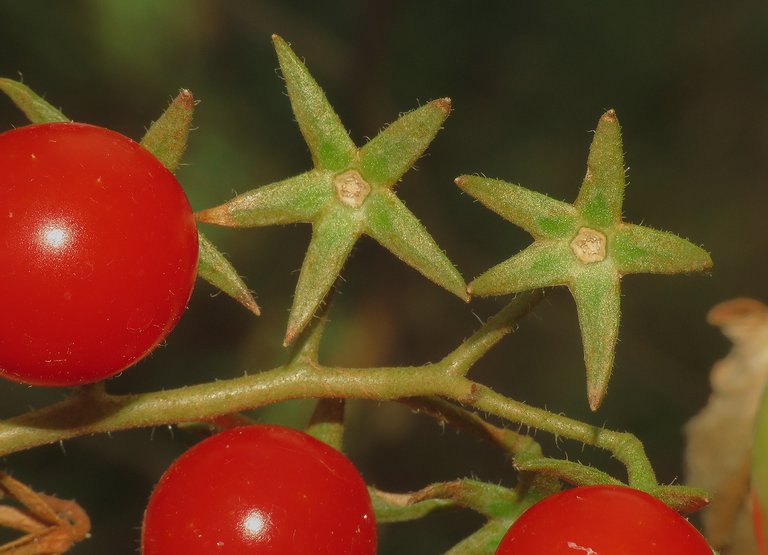
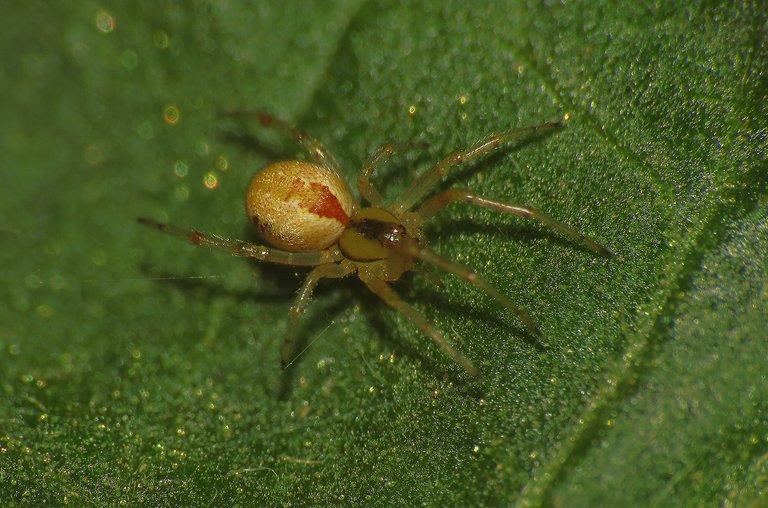
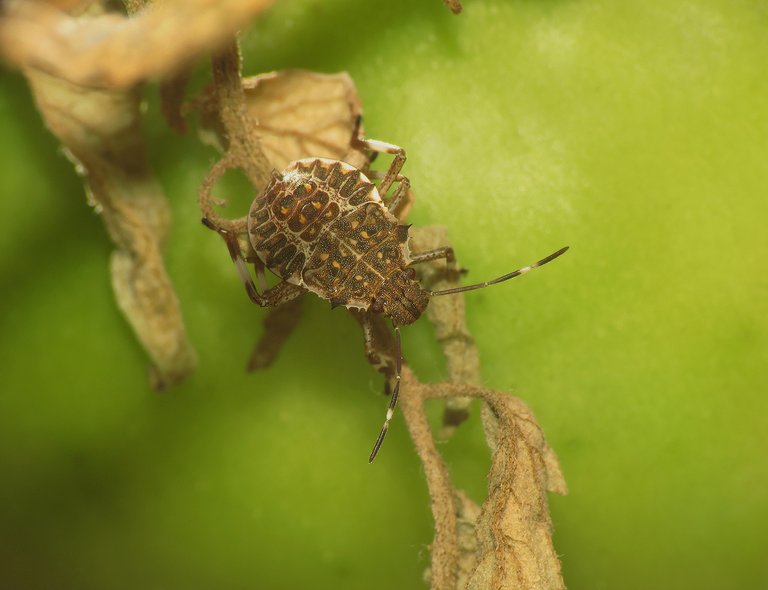
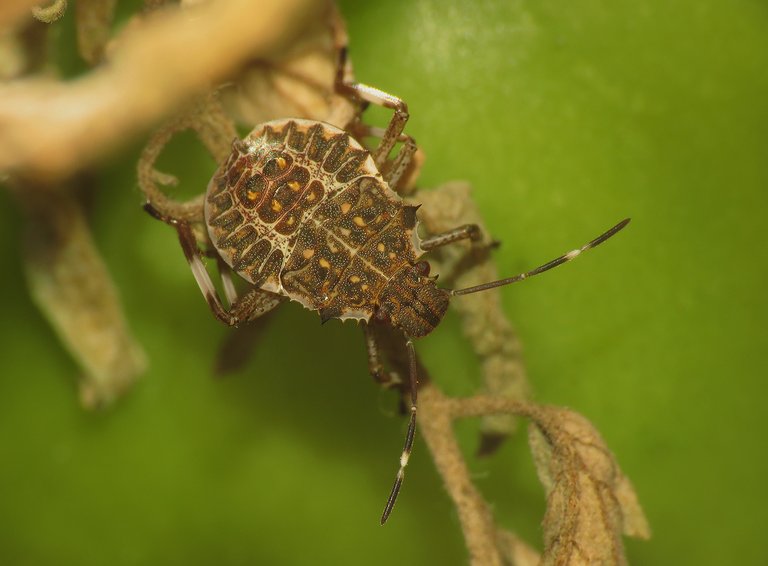



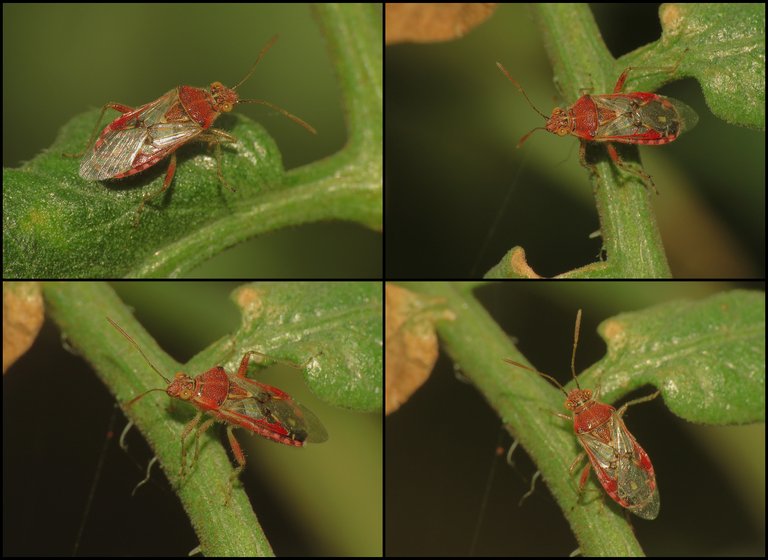


So many nice photos of nature in your garden. That wasp was rather nasty and cruel using other insects to propagate themselves. We could never see all the small insects in the garden as they come out feasting at night. Now we have lots of problems with tiny snails. They come out at night and eat all the leaves of small plants.
The red colour is very strong in your garden. We will have to wait for the rain to stop before we could plant any vegetables.
Your cherry tomatoes look great. Love to have a bucket. It’s quite expensive here!
We also have a variety of insects in the garden during the summer, but the vegetable garden has the greatest variety of insects. But some of them are harmful to crops. You have seen some beautiful insects in your garden. You have taken beautiful photography.
Imformative. Keep posting
It seems that the shield from the shiled bug in not that effective against the parasitic wasp.
Shield bug zombie is in the making.
!luv !PIZZA
@borjan, @ekavieka(2/5) sent LUV. | connect | community | HiveWiki | NFT | <>< daily
! help(no space) to get help on Hive. Info$PIZZA slices delivered:
ekavieka tipped borjan
@jlinaresp(7/10) tipped @borjan
Each picture shows your skills and hard work. Well captured.
Amazing photos.
Wow! For the first time I'm seeing a green Beetle with white and black spots.
Thanks for sharing.
Sounds like insects are feasting during summer. The tomatoes look so nice and neat.
So many insects that we didn't know the source and how it begins. The way they get sustained is also top notched. Nature is really beautiful
Your pictures are fabulous and your knowledge of the different bugs in this post is remarkable. The only bug that I noticed that we have in common here in Upstate New York is the stink bug.
Very informative and interesting post, thanks for sharing.
Thank you. 🙂 Glad you like the post.
Loved it!
The comment to this post should contain several printed pages, but I will limit myself to the wasp that laid a larva in the body of the bug, this is a wonderful moment!
!ALIVE
@borjan! You Are Alive so I just staked 0.1 $ALIVE to your account on behalf of @ peter-stone. (1/10)
The tip has been paid for by the We Are Alive Tribe through the earnings on @alive.chat, feel free to swing by our daily chat any time you want, plus you can win Hive Power (2x 50 HP) and Alive Power (2x 500 AP) delegations (4 weeks), and Ecency Points (4x 50 EP), in our chat every day.

🙂
That crab spider is an interesting little fella. Is the shield bug what I perhaps may know as a 'stink bug'? Although those do have quite a disctint smell, I still find them to be cute this creatures - better suited to the outdoors when they wonder inside haha.
Noticed a couple of the tomatoes are shriveling up.. do you intentionally ripen & even dry the tomatoes on the vine? Awesome post as usual.
Yes, 🙂 stink bug is the other common name for this type of bug.
There are usually more tomatoes than I need. Sometimes I eat other stuff, forget about them for a day or two and they overripe and shrivel.
🍅
This year we have been growing peppers in our garden for the first time. At the moment they are all green and quite large. We are hoping that they will turn red soon, but I'm not sure when that might be !LOL
There are no insects on ours though, so not much of any interest in that respect. So it was interesting to see all the insect activity on your photos. Nature is fascinating!
Have a nice day, and keep searching for more Nature life !VSC
@fun.farms has sent VSC to @borjan
This post was rewarded with 0.1 VSC to support your work.
Join our photography communityVisual Shots
Check here to view or trade VSC Tokens
Be part of our Curation Trail
@fun.farms ha enviado VSC a @borjan
Éste post fue recompensado con 0.1 VSC para apoyar tu trabajo.
Únete a nuestra comunidad de fotografía Visual Shots
Consulte aquí para ver o intercambiar VSC Tokens
Se parte de nuestro Trail de Curación
lolztoken.com
He was a terrible conductor.
Credit: reddit
@borjan, I sent you an $LOLZ on behalf of fun.farms
(1/10)
Delegate Hive Tokens to Farm $LOLZ and earn 110% Rewards. Learn more.
Thank you. 🙂 Have a nice day and best wishes for the peppers.
🌶🌶🌶 👍
it's really great to find various types of unique animals in the garden.@borjan
Your pictures are always amazing
These ones also look good as usual
Nice one!
https://twitter.com/lee19389/status/1707024906339160135
#hive #posh
Congratulations, your post has been upvoted by @dsc-r2cornell, which is the curating account for @R2cornell's Discord Community.
I love these pictures they are very beautiful and attractive. It's lovely how you shared the black soldier fly and its role in decomposing organic matter... Good one friend..
Beautiful as always! Both types of the bugs are very colourful. I haven't seen them before! Thanks for sharing brojan
I have legitly never heard of a black soldier fly or even a crab spider! Might be every country has something of their own hey!!
Yes. There are so many species, that it's hard to know them all. 🙂
Very nice photos @borjan, I see many beneficial arthropods in your garden, although I can't say the same for most of the insects (Heteroptera) that I saw in your images, fortunately, you also managed to capture the exact moment when a Braconidae wasp parasitized one of these insects that frequently damage plants, that was the photo that caused me the most surprise and also the one I liked the most, it looked great. Thank you very much for sharing these photos, a post full of lots of natural color.
Thanks. 🙂 Glad you like the post. I'm usually more entertained by photographing the insects than I need the fruits and vegetables in my garden for food, so even the worst pests are welcomed in that place. 😃 But even with the pests, I get every season more than enough to eat.
So we are 2 with the pleasure of photographing any arthropod whether it is a pest or not hahaha, in my plants are only annoying when they damage them, but otherwise something is taken from any insect that visits the orchards. 😃😃
https://twitter.com/jewellery_all/status/1707134402063655235
The photos are simply amazing. I love the peppers and their flowers. The photos of the insects are so pleasing to look at. I might need to regard new in a different way. 😀😀
🙂
Another delicious "feast of macros" for us at #Hive!.... Thanks for sharing!
!VSC
!PIZZA
!BBH
@jlinaresp has sent VSC to @borjan
This post was rewarded with 0.1 VSC to support your work.
Join our photography communityVisual Shots
Check here to view or trade VSC Tokens
Be part of our Curation Trail
@jlinaresp ha enviado VSC a @borjan
Éste post fue recompensado con 0.1 VSC para apoyar tu trabajo.
Únete a nuestra comunidad de fotografía Visual Shots
Consulte aquí para ver o intercambiar VSC Tokens
Se parte de nuestro Trail de Curación
https://leofinance.io/threads/jlinaresp/re-leothreads-28wyf2bpg
The rewards earned on this comment will go directly to the people ( jlinaresp ) sharing the post on LeoThreads,LikeTu,dBuzz.
Congratulations @borjan! You have completed the following achievement on the Hive blockchain And have been rewarded with New badge(s)
Your next target is to reach 56000 upvotes.
You can view your badges on your board and compare yourself to others in the Ranking
If you no longer want to receive notifications, reply to this comment with the word
STOPTo support your work, I also upvoted your post!
Check out our last posts:
The types of insects are quite beautiful.
Your shots are always topnotch. So beautiful with description.
As always, I find your photos mesmerizing. Loved this micro tour of your garden.
Thank you. 😃 I wasn't driving around much this summer, so I explored the insects in my garden like never before.
What an incredible post, dear @borjan - I am amazed and enthused... Thank you for the huge efforts which must have gone into making this article! 😍 And many many blessings on your garden.
Thank you. 😃 And greetings from all the spiders and insects that live there.
It's great to be able to observe all those insects in detail through your lenses, I very much appreciate you efforts!!:)
Thank you. 🙂
Cool garden photos... I like this spider ☺👌👌👍
🙂 Thanks.
Not stop and find more ☺👍👌
ESPLENDIDAS FOTOS, TIENES MUY BUENA CÁMARA Y MACRO
Wow its amazing your garden theres a lot of species